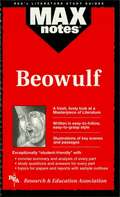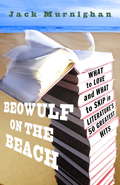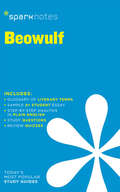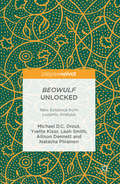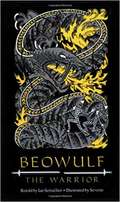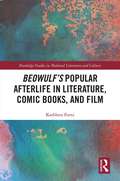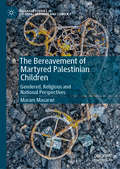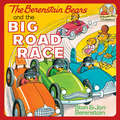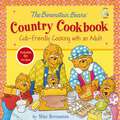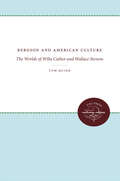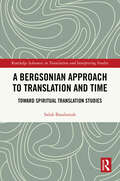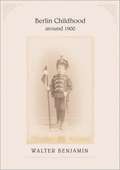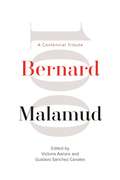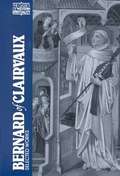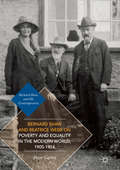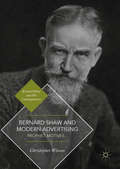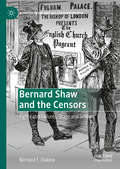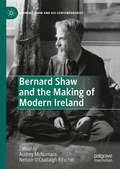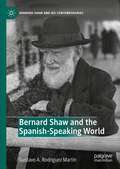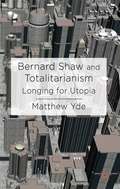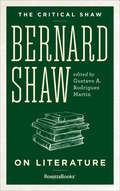- Table View
- List View
Beowulf (MAXNotes Literature Guides)
by Gail RaeREA's MAXnotes for The Beowulf Poet's Beowulf MAXnotes offer a fresh look at masterpieces of literature, presented in a lively and interesting fashion. Written by literary experts who currently teach the subject, MAXnotes will enhance your understanding and enjoyment of the work. MAXnotes are designed to stimulate independent thought about the literary work by raising various issues and thought-provoking ideas and questions. MAXnotes cover the essentials of what one should know about each work, including an overall summary, character lists, an explanation and discussion of the plot, the work's historical context, illustrations to convey the mood of the work, and a biography of the author. Each chapter is individually summarized and analyzed, and has study questions and answers.
Beowulf on the Beach: What to Love and What to Skip in Literature's 50 Greatest Hits
by Jack MurnighanFrom Homer and Proust to "Beloved" and the Bible, "Beowulf on the Beach" is a user-friendly guide through the imposing world of literature.
Beowulf SparkNotes Literature Guide (SparkNotes Literature Guide Series #18)
by SparkNotesBeowulf SparkNotes Literature Guide Making the reading experience fun! When a paper is due, and dreaded exams loom, here's the lit-crit help students need to succeed! SparkNotes Literature Guides make studying smarter, better, and faster. They provide chapter-by-chapter analysis; explanations of key themes, motifs, and symbols; a review quiz; and essay topics. Lively and accessible, SparkNotes is perfect for late-night studying and paper writing. Includes:An A+ Essay—an actual literary essay written about the Spark-ed book—to show students how a paper should be written.16 pages devoted to writing a literary essay including: a glossary of literary termsStep-by-step tutoring on how to write a literary essayA feature on how not to plagiarize
Beowulf Unlocked: New Evidence from Lexomic Analysis
by Michael D. C. Drout Yvette Kisor Leah Smith Allison Dennett Natasha PiirainenThe most original and ground-breaking work on Beowulf in several decades, this book uses "lexomic" methods that blend computer-assisted statistical analysis with traditional approaches to reveal new and surprising information about the construction and sources of the greatest surviving Old English poem. Techniques of cluster analysis identify patterns of vocabulary distribution that indicate robust similarities and differences among segments of the poem. The correlation of these patterns with knowledge gained from source-study, philological analysis, and neglected previous scholarship sheds new light on the material of which Beowulf was made and the way it was composed. The implications of this investigation for the dating, structure, and cultural context of Beowulf will overturn the current scholarly consensus and significantly improve our understanding of the poem, its nature, and origins.
Beowulf The Warrior (Living History Library)
by Ian Serraillier Mark Severin Lydia ReynoldsBeowulf the Warrior is an outstanding modern version of the oldest epic in the English language. Ian Serraillier has retold in verse the story of the hero Beowulf and his three memorable exploits-first, his rescuing of Hrothgar the Dane from the ravages of monstrous Grendel; next, his victory over Grendel's strange and horrible mother; and finally, in Beowulf's old age, his saving of his own people, the Geats, from the horrors of a dragon at the cost of his life. Beowulf's heroism and noble heart communicate to any modern listener.
Beowulf's Popular Afterlife in Literature, Comic Books, and Film
by Kathleen ForniBeowulf's presence on the popular cultural radar has increased in the past two decades, coincident with cultural crisis and change. Why? By way of a fusion of cultural studies, adaptation theory, and monster theory, Beowulf's Popular Afterlife examines a wide range of Anglo-American retellings and appropriations found in literary texts, comic books, and film. The most remarkable feature of popular adaptations of the poem is that its monsters, frequently victims of organized militarism, male aggression, or social injustice, are provided with strong motives for their retaliatory brutality. Popular adaptations invert the heroic ideology of the poem, and monsters are not only created by powerful men but are projections of their own pathological behavior. At the same time there is no question that the monsters created by human malfeasance must be eradicated.
The Bereavement of Martyred Palestinian Children: Gendered, Religious and National Perspectives (Palgrave Studies in Cultural Heritage and Conflict)
by Maram MasarwiThis book examines the phenomenon of individual and collective bereavement in Palestinian society. It seeks to explore the boundaries of the discourse of bereavement and commemoration in that society through the interactive relations between religion, nationality and gender, and the ways these influence the shaping of the mourning process for Palestinian parents who have lost their children in the second (al-Aqsa) Intifada. Over the course of the book’s five chapters, Maram Masarwi scrutinizes how these components have shaped the differences in behavior between bereaved fathers and bereaved mothers: what characterizes these differences, how they are expressed, and how they have managed to shape the characteristics of the experience of Palestinian bereavement.
The Berenstain Bears and the Big Road Race (First Time Books(R))
by Stan Berenstain Jan Berenstain"Over, under, around and through went Orange, Yellow, Green and Blue", but Brother Bear in his little red car slowly but surely wins out in this tortoise-and-hare story. Full-color illustrations. Copyright © Libri GmbH. All rights reserved.
The Berenstain Bears' Country Cookbook: Cub-Friendly Cooking with an Adult (Berenstain Bears/Living Lights: A Faith Story)
by Mike BerenstainIf your family is a fan of the Berenstain Bears or you are searching for a kid-friendly cookbook, The Berenstain Bears&’ Country Cookbook will be a family favorite. With 40 easy-to-follow recipes, your kiddos will enjoy making dishes for breakfast, lunch, dinner, and dessert. This cookbook is perfect for ages 4 to 8 and is filled with fun for the whole family. Inside you&’ll find:40 recipes (10 recipes for each section: breakfast, lunch, dinner, and dessert)Fun ways to incorporate grace before each mealSweet facts about honeyKitchen measurement conversionsCooking is a great way for children to develop cognitive skills and abilities. With step-by-step directions and delicious recipes, this kid-friendly cookbook teaches children of all ages how to:Apply knowledge of math, science, and languageFollow instructions and solve problemsMake predictions and observationsThe Berenstain Bears&’ Country Cookbook is an addition to The Living Lights™ series:Features the hand-drawn artwork of the Berenstain familyThis Berenstain Bears series of books continues in the much-loved footsteps of Stan and Jan BerenstainIs part of one of the bestselling children&’s book series ever created, with more than 250 books published and nearly 300 million copies sold to date
Bergson and American Culture: The Worlds of Willa Cather and Wallace Stevens
by Tom QuirkBergsonian "vitalism" challenged the dominance of Spencerian determinism in the early twentieth century and seemed to offer a new foundation for belief in human freedom and individual possibility. Quirk traces the impact of Bergsonism upon the American sensibility and shows how individual writers -- particularly two such different artists as Willa Cather and Wallace Stevens -- appropriated vitalistic notions and made them serve the peculiar requirements of their own unique creative imaginations.Originally published in 1990.A UNC Press Enduring Edition -- UNC Press Enduring Editions use the latest in digital technology to make available again books from our distinguished backlist that were previously out of print. These editions are published unaltered from the original, and are presented in affordable paperback formats, bringing readers both historical and cultural value.
A Bergsonian Approach to Translation and Time: Toward Spiritual Translation Studies (ISSN)
by Salah BasalamahThis innovative book offers a systematic conceptual exploration of translation through the lens of time, challenging the traditional notion of translation as mere linguistic transfer and advancing a new research agenda within the philosophy of translation.The volume sets the stage by establishing an overarching framework that positions the philosophy of translation as a distinct subdiscipline within translation studies. It then reviews existing scholarship on translation in light of Henri Bergson's philosophy of time, proposing an expanded conceptualization of translation. Using this foundation, Basalamah explores a variety of topics at the intersection of translation and time from transdisciplinary perspectives, including epistemology, consciousness, mediations through image and art, the mind/body problem, time in phenomenology, and ethical and religious considerations.As a pioneering work on the temporal characteristic of translation, this book will be of interest to students and scholars in translation studies, especially those focused on its philosophical treatment.
Berlin Childhood around 1900
by Walter Benjamin Howard EilandBerlin Childhood around 1900 remained unpublished during Walter Benjamin's lifetime. Now translated into English for the first time in book form, on the basis of the recently discovered final version that contains the author's own arrangement of a suite of luminous vignettes, it can be more widely appreciated as one of the masterpieces of twentieth-century prose writing. This book is also one of Benjamin's great city texts, bringing to life the cocoon of his childhood--the parks, streets, schoolrooms, and interiors of an emerging metropolis. It reads the city as palimpsest and labyrinth, revealing unexpected lyricism in the heart of the familiar.
Bernard Malamud: A Centennial Tribute
by Victoria Aarons Gustavo Sanchez CanalesMaster storyteller and literary stylist Bernard Malamud is considered one of the top three most influential postwar American Jewish writers, having established a voice and a presence for other authors in the literary canon. Along with Philip Roth and Saul Bellow, Malamud brought to life a decidedly American Jewish protagonist and a newly emergent voice that came to define American letters and that has continued to influence writers for over half a century. This collection is a tribute to Malamud in honor of the hundredth anniversary of his birth. Literary critic Harold Bloom suggests that “Malamud is perhaps the purest storyteller since Leskov,” the nineteenth-century Russian novelist and satirist. Novelist Cynthia Ozick, in a tribute to Malamud, described him as “the very writer who had brought into being a new American idiom of his own idiosyncratic invention.” Unlike other collections devoted to Malamud, this collection is international in scope, compiling diverse essays from the United States, France, Germany, Greece, and Spain, and demonstrating the wide range of scholarship and approaches to Bernard Malamud’s fiction. The essays show the breadth and depth of this masterful craftsman and explore through his short fiction and his novels such topics as the Malamudian protagonist’s relation to the urban/natural space; Malamud’s approach to death; race and ethnicity; the Malamudian hero as modern schlemiel; and the role of fantasy in Malamud’s fiction. Bernard Malamud is a comprehensive collection that celebrates a voice that helped to shape the last fifty years of literary works. Readers of American literary criticism and Jewish studies alike will appreciate this collection.
Bernard of Clairvaux: Selected Works
by Jean Leclercq Ewert Cousins G. R. Evans Bernard Of ClairvauxHere are writings of the great medieval spiritual teacher (1090-1153) who was preacher of the Crusades and founder of the Cistercians, with an introduction on the forming of Bernard's spirituality, its character and influence.
Bernard Shaw: Volume 1, 1856-1898, The Search for Love
by Michael HolroydBiography of George Bernard Shaw from his birth to his marriage at age 42.
Bernard Shaw: Volume 3, 1918-1951, The Lure of Fantasy
by Michael HolroydBiography of George Bernard Shaw, from World War I to his death at age 94.
Bernard Shaw: Volume 2, 1898-1918, The Pursuit of Power
by Michael HolroydBiography of George Bernard Shaw from age 42 to age 62, at the height of his career.
Bernard Shaw: A Reassessment
by Colin WilsonThe author devotes much thought to Shaw's formative years, 20-30, and how his novels built up the Shaw persona, and how his success changed him.
Bernard Shaw and Beatrice Webb on Poverty and Equality in the Modern World, 1905–1914 (Bernard Shaw and His Contemporaries)
by Peter GahanThis book investigates how, alongside Beatrice Webb's ground-breaking pre- World War One anti-poverty campaigns, George Bernard Shaw helped launch the public debate about the relationship between equality and democracy in a developed economy. The ten years following his great 1905 play on poverty Major Barbara present a puzzle to Shaw scholars, who have hitherto failed to appreciate both the centrality of the idea of equality in major plays like Getting Married, Misalliance, and Pygmalion, and to understand that his major political work, 1928's The Intelligent Woman's Guide to Socialism and Capitalism had its roots in this period before the Great War. As both the era's leading dramatist and leader of the Fabian Society, Shaw proposed his radical postulate of equal incomes as a solution to those twin scourges of a modern industrial society: poverty and inequality. Set against the backdrop of Beatrice Webb's famous Minority Report of the Royal Commission on the Poor Law 1905-1909 - a publication which led to grass-roots campaigns against destitution and eventually the Welfare State - this book considers how Shaw worked with Fabian colleagues, Sidney and Beatrice Webb, and H. G. Wells to explore through a series of major lectures, prefaces and plays, the social, economic, political, and even religious implications of human equality as the basis for modern democracy.
Bernard Shaw and Modern Advertising: Prophet Motives (Bernard Shaw and His Contemporaries)
by Christopher WixsonThis book charts how promotional campaigns in which Bernard Shaw participated were key crucibles within which agency and personality could re-negotiate their relationship to one another and to the consuming public. Concurrent with the rise of modern advertising, the creation of Shaw’s 'G.B.S.' public persona was achieved through masterful imitation of patent medicine marketing strategies and a shrewd understanding of the relationship between product and spokesman. Helping to enhance the visibility of his literary writing and dovetailing with his Fabian political activities, 'G.B.S.' also became a key figure in the evolution of testimonial endorsement and the professionalizing of modern advertising. The study analyzes multiple ad series in which Shaw was prominently featured that were occasions for self-promotion for both Shaw and the agencies, and presage the iconoclastic style of contemporary 'public personality' and techniques of celebrity marketing.
Bernard Shaw and the Censors: Fights and Failures, Stage and Screen (Bernard Shaw and His Contemporaries)
by Bernard F. Dukore“Dukore’s style is fluid and his wit delightful. I learned a tremendous amount, as will most readers, and Bernard Shaw and the Censors will doubtless be the last word on the topic.”- Michel Pharand, former editor of SHAW: The Journal of Bernard Shaw Studies and author of Bernard Shaw and the French (2001). "This book shows us a new side of Shaw and his complicated relationships to the powerful mechanisms of stage and screen censorship in the long twentieth century.” - - Lauren Arrington, Professor of English, Maynooth University, IrelandA fresh view of Shaw versus stage and screen censors, this book describes Shaw as fighter and failure, whose battles against censorship – of his plays and those of others, of his works for the screen and those of others – he sometimes won but usually lost. We forget usually, because ultimately he prevailed and because his witty reports of defeats are so buoyant, they seem to describe triumphs. We think of him as a celebrity, not an outsider; as a classic, not one of the avant-garde, of which Victorians and Edwardians were intolerant; as ahead of his time, not of it, when he was called “disgusting,” “immoral", and "degenerate.” Yet it took over three decades and a world war before British censors permitted a public performance of Mrs Warren’s Profession. We remember him as an Academy Award winner for Pygmalion, not as an author whose dialogue censors required deletions for showings in the United States. Scrutinizing the powerful stage and cinema censorship in Britain and America, this book focuses on one of its most notable campaigners against them in the last century.
Bernard Shaw and the Making of Modern Ireland (Bernard Shaw and His Contemporaries)
by Audrey McNamara Nelson O’Ceallaigh RitschelThis book is an anthology focused on Shaw’s efforts, literary and political, that worked toward a modernizing Ireland. Following Declan Kiberd’s Foreword and the editor’s Introduction, the contributing chapters, in their order of appearance, are from President of Ireland Michael D. Higgins, Anthony Roche, David Clare, Elizabeth Mannion, Nelson O’Ceallaigh Ritschel, Aisling Smith, Susanne Colleary, Audrey McNamara, Aileen R. Ruane, Peter Gahan, and Gustavo A. Rodriguez Martin. The essays establish that Shaw’s Irishness was inherent and manifested itself in his work, demonstrating that Ireland was a recurring feature in his considerations. Locating Shaw within the march towards modernizing Ireland furthers the recent efforts to secure Shaw’s place within the Irish spheres of literature and politics.
Bernard Shaw and the Spanish-Speaking World (Bernard Shaw and His Contemporaries)
by Gustavo A. Rodríguez MartínThis book explores, through a multidisciplinary approach, the immense influence exerted by Bernard Shaw on the Spanish-speaking world on both sides of the Atlantic. This collection of essays encompasses the reception and dissemination of his ideas; the translation of his works into Spanish; the performance history of his plays in Spain and Latin America; and Shaw’s influence on many key figures of literature in Spanish. It begins by delving into Shaw’s knowledge of Spanish literature and gauging his acquaintance with the Spanish cultural milieu throughout his tenure as an art, music, and theatre critic. His early exposure to Spanish-speaking culture later made the return trip in the form of profuse critical reception and theatrical success in countries like Spain, Argentina, Mexico, and Uruguay. This allows for a more detailed investigation into the unmistakable mark that Bernard Shaw left in the oeuvre of leading Spanish-speaking authors like Ramiro de Maeztu, Jorge Luis Borges or Nemesio Canales. This volume also assesses the translations of Shaw’s works into Spanish—while also providing a detailed publication history of these translations.
Bernard Shaw and Totalitarianism Longing for Utopia
by Matthew YdeThis book reveals the genuity of Shaw's totalitarianism by looking at his material - articles, speeches, letters, etc but is especially concerned with analyzing the utopian desire that runs through so many of Shaw's plays; looking at his political and eugenic utopianism as expressed in his drama and comparing this to his political totalitarianism.
Bernard Shaw on Literature: On Literature (The Critical Shaw)
by George Bernard ShawA collection of literary criticism from the Nobel Prize–winning playwright behind such classics as Saint Joan and Pygmalion.The Critical Shaw: On Literature is a comprehensive selection of renowned Irish playwright and Nobel Laureate Bernard Shaw&’s ideas and opinions on a wide range of literary forms of expression, from Shakespearean drama to ghost stories, from naturalist novels to philosophical essays. Shaw meticulously applied his comprehensive knowledge of the intricacies of writing and publishing (composition, typesetting, style, themes, censorship) and in the process produced an extensive array of critical works spanning more than fifty years. Always with an axe to grind—whether aesthetic, ethical, or otherwise—Shaw tested the boundaries of satire in his critical essays, occasionally locking horns as a result with some of the most prominent authors of his lifetime. Displaying wit and wisdom in equal proportions, some of his reviews remain fresh even though the authors and books they appraised have long since fallen into oblivion. Shaw&’s views about literature challenged established conventions of the canon and helped to shape a renewed collective concept of literature.The Critical Shaw series brings together, in five volumes and from a wide range of sources, selections from Bernard Shaw&’s voluminous writings on topics that exercised him for the whole of his professional career: Literature, Music, Politics, Religion, and Theater. The volumes are edited by leading Shaw scholars, and all include an introduction, a chronology of Shaw&’s life and works, annotated texts, and a bibliography. The series editor is L.W. Conolly, literary adviser to the Shaw Estate and former president of the International Shaw Society.
